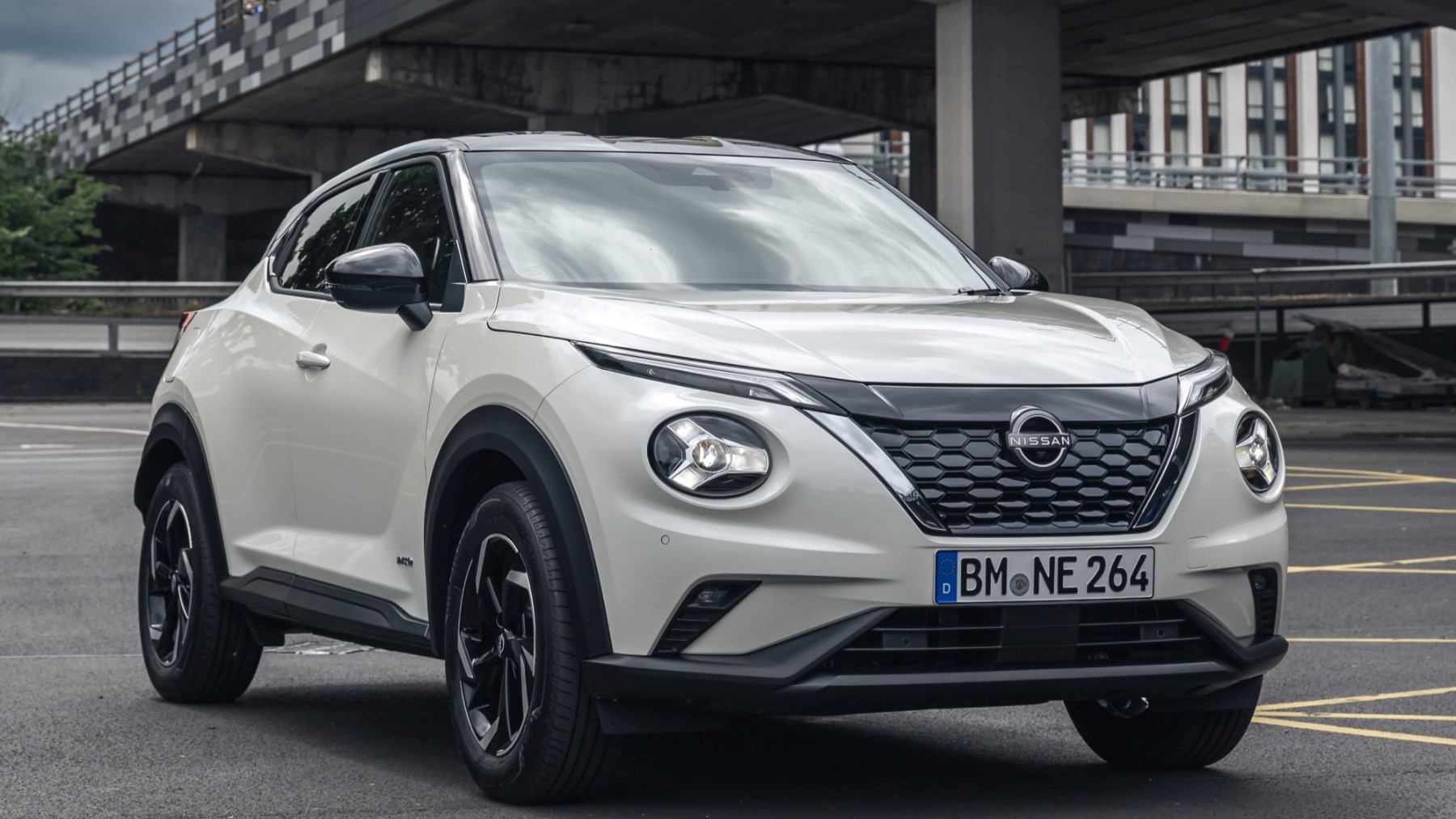► Nissan’s latest Juke, tested
► Gets Hybrid heart and minor upgrades
► Faster and more frugal than petrol
25% more power, 20% better fuel economy, four ICE gears, two EV ones and three hybrid modes. The Juke Hybrid is an assault of complex numbers and spinning plates.
Importantly though, this hybrid Juke is the most economical of the range. It’s around £1,700 more than a regular model, or about £15 more a month on a typical PCP deal. At a time of £2 a litre, that can make a world of difference.
Talk hybrid to us
The hybrid system is the main talking point here. It’s one of three hybrids Nissan has in its arsenal (the other two being a mild hybrid system and Nissan’s ePower). It’s broadly the same set-up you’ll find in the Renault Captur.
That means it gets a 93bhp nat asp 1.6-litre petrol, 48bhp e-motor, a starter generator and a 1.2kwh battery. Total combined output is 141bhp.
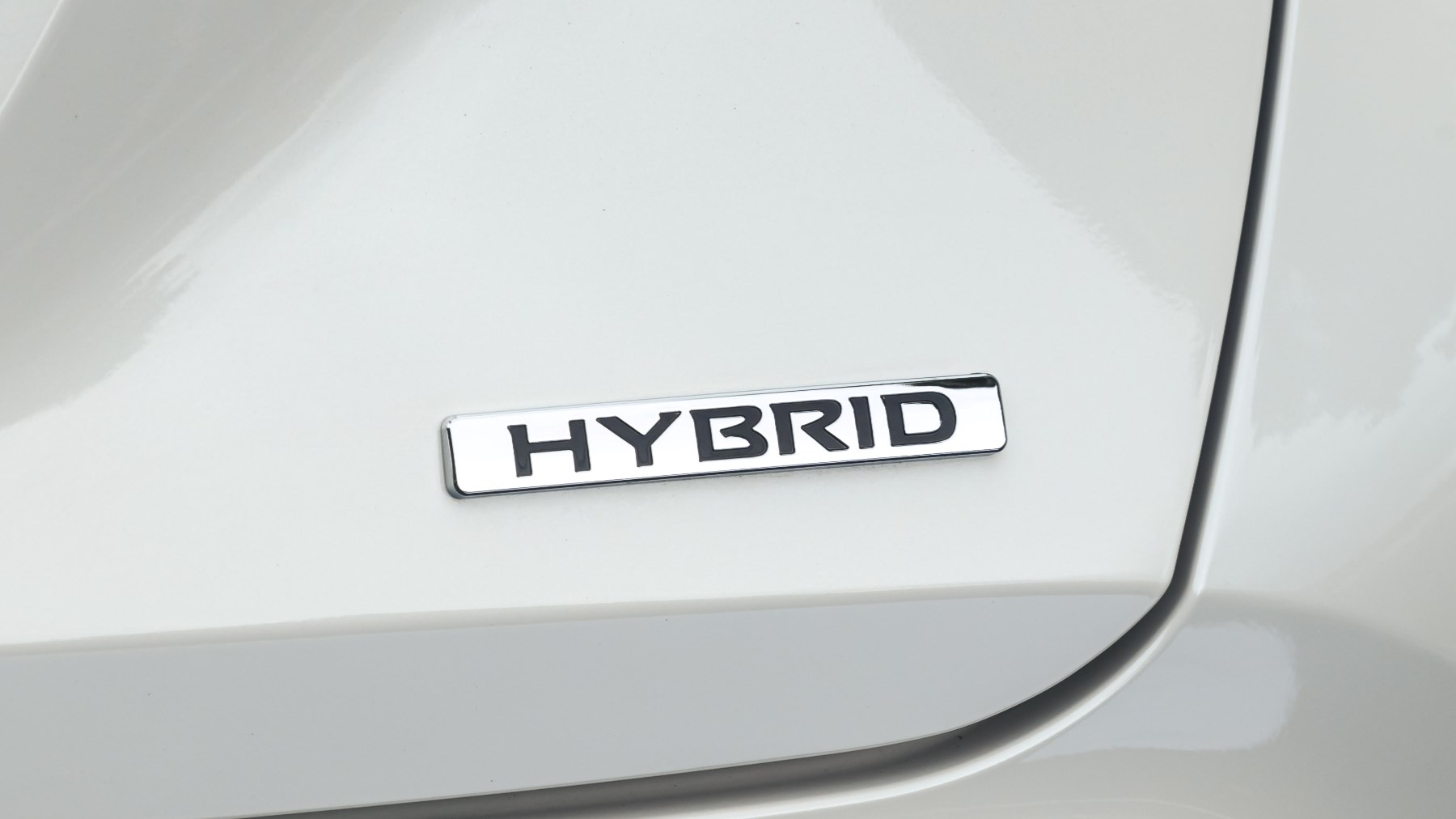
The Juke Hybrid always starts in EV mode, where it can doddle around just on electricity. In ‘series hybrid mode’ the ICE charges the battery, basically acting like a generator. This is broadly good for town work.
Under heavier loads it’ll slip into parallel mode. Here, both the e-motor and ICE drive the wheels.
And what’s it like to drive?
This is largely dependent on what the hybrid system is up to. In electric mode it won’t last long and only goes up to 34mph, but it potters along calmly.
On our test route it spent most of its time in series hybrid mode. This is pretty relaxing, without much mooing from the gearbox(es). Acceleration isn’t what you’d call nippy, but it feels usefully quicker than the regular Juke. The industry standard 0-62mph sprint is accounted for in 10.1 seconds, around 1.7s faster than the standard car.
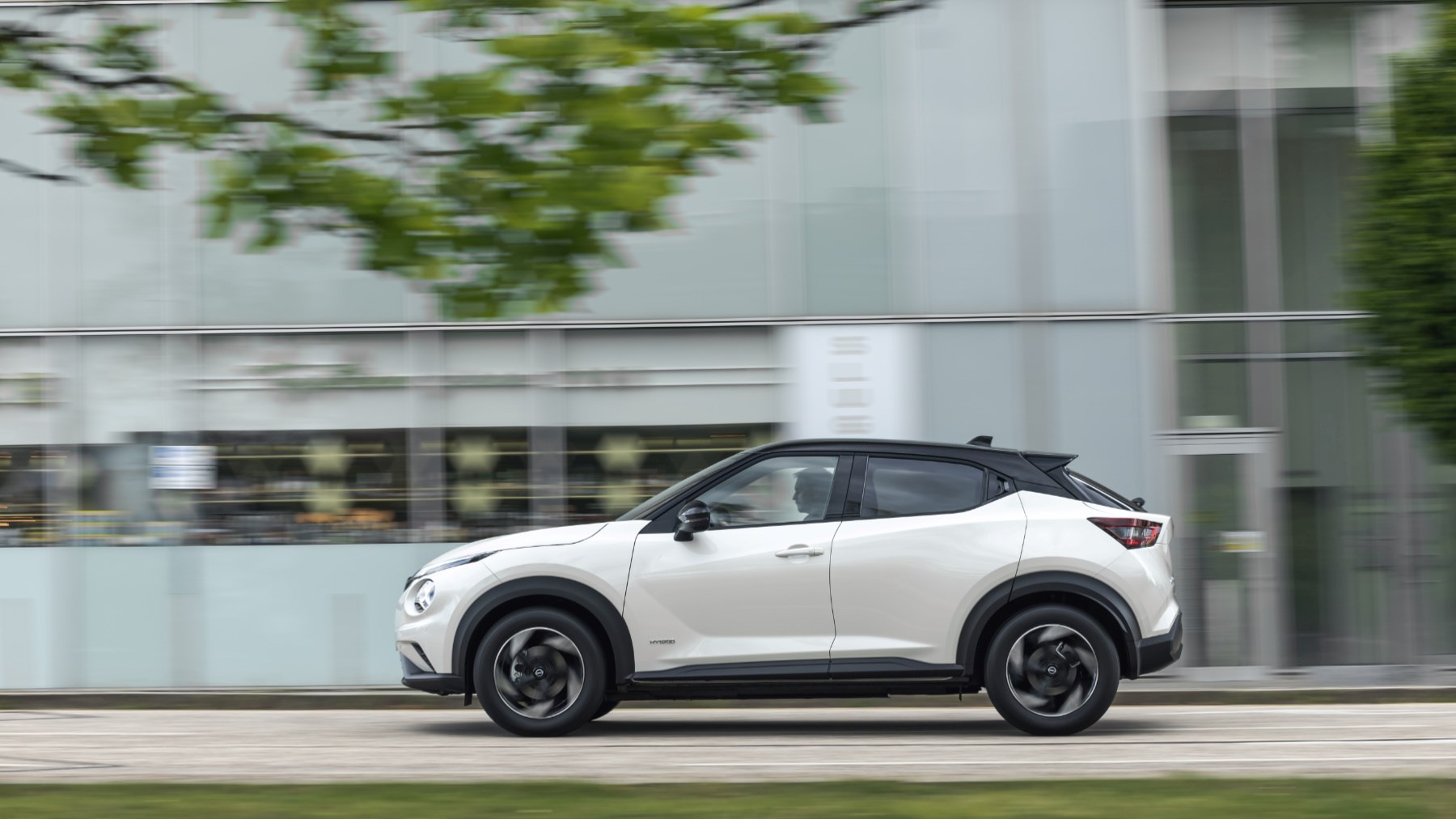
Under sustained accelerator pedal action both the electric motor and engine operate at the same time (parallel mode if you remember the science lesson from earlier).
This is where it begins to fall down. The noise coming from the engine doesn’t quite correlate to how fast you’re travelling. There’s a different software setup in this when compared with the Renault Captur and it feels smoother. But it’s still not great.
The fruit of this car’s labour is its mpg and disappointingly on our 60-mile journey it averaged about 42. Pretty far off the 55ish wltp figure.
Nissan’s engineers have tweaked the springs and the dampers to accommodate the extra 100kg of the hybrid packaging. Around town, where the Juke will spend most of its time, everything is kept in check nicely. Nissan brazenly refers to the Juke as a ‘roundabout superstar’, and while it’s no Caterham Seven 420 Cup, it does hold out nicely.
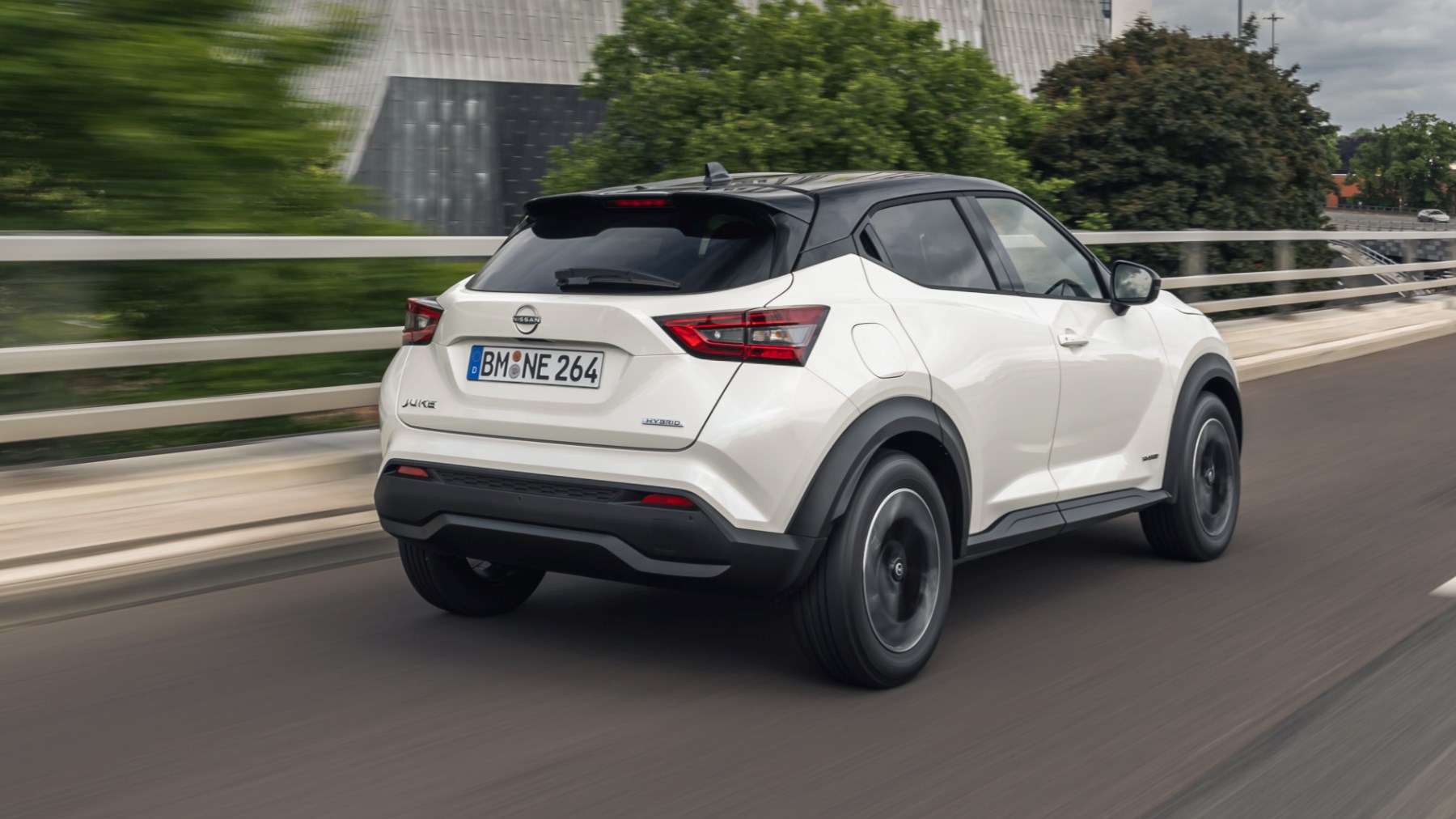
Roadholding is strong for a car in this class and the steering, while ultimately lacking in outright feel, doesn’t have much looseness in it. There’s little roll to report either.
It’s still too stiff mind you. Potholes are definitely thumped into rather than glided across, and the reverberations can be felt pretty heavily. At motorway speed it improves. Interestingly, the ride isn’t affected too much by whether you choose 17 or 19-inch wheels.
Interior any good?
Interior differences between this and the regular Juke span to an energy flow gauge instead of an RPM one, and an e-Pedal button.
That’s the name for Nissan’s one pedal brake regen tech. It’s unusual to have a full regen mode in a hybrid, but it works well. Turn it on and as soon as you lift off the accelerator it’ll start braking, clawing back energy for the battery. It’s not as one pedal as Nissan makes out because it only slows you down to about 5mph, but nevertheless, it’s a useful addition.
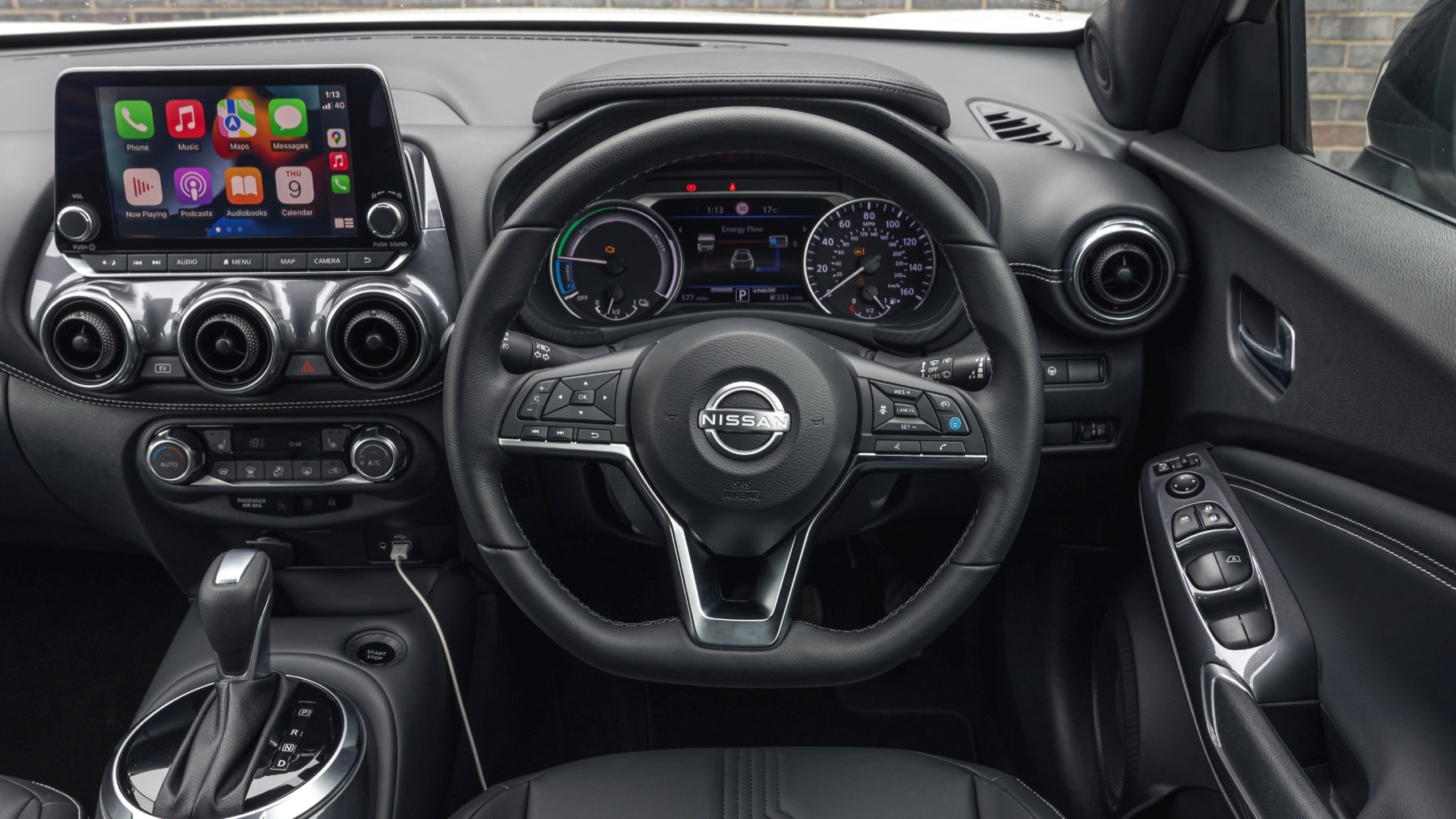
For a full rundown of the interior we recommend heading to our regular Juke review. But in short, it’s beginning to look a little old in here. There’s enough room for a six-footer to sit behind a similarly sized-driver, but the rising window line means it’s pretty claustrophobic in the rear.
The infotainment’s graphics look old but it has Apple CarPlay/Android Auto, plus the Bose sound system is crisp. The battery gubbins have been located underneath the boot. You still get an adjustable height boot floor, but it loses out 68 litres in outright space when compared with the regular car.
Verdict
Nissan has shifted nearly 50,000 of these second-gen Jukes in the UK. If your PCP deal is nearly up on your petrol Juke and you want something that manages to be usefully faster and cleaner, fill your boots. Plus Nissan’s waiting lists are only around six months, rather than 18.
But the Juke Hybrid isn’t one to recommend if you’re an undecided voter. The Ford Puma is more fun to drive, the Skoda Kamiq more practical and the Toyota Yaris Cross is more economical with a simpler and quieter hybrid system.
